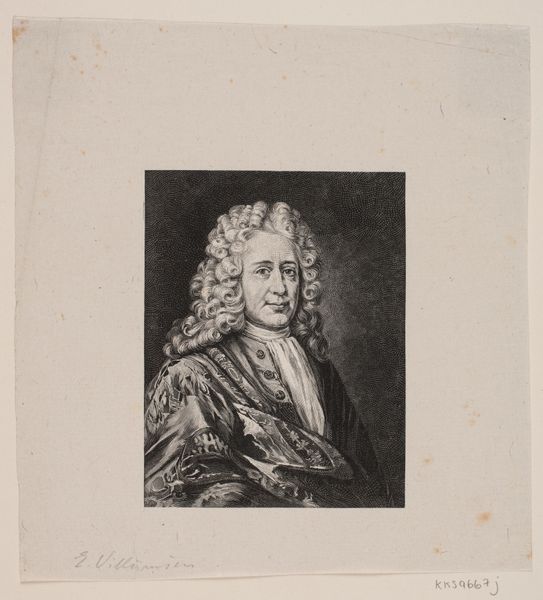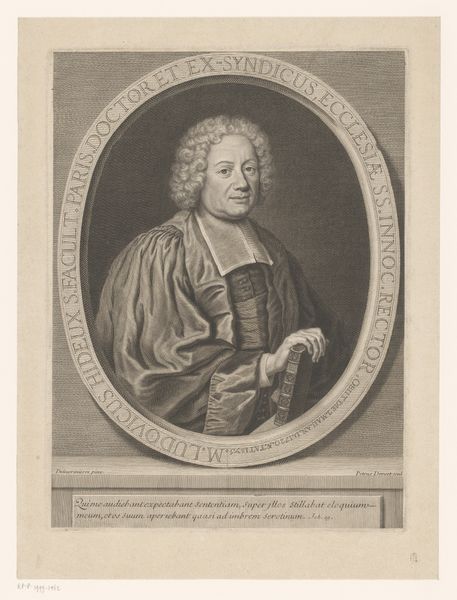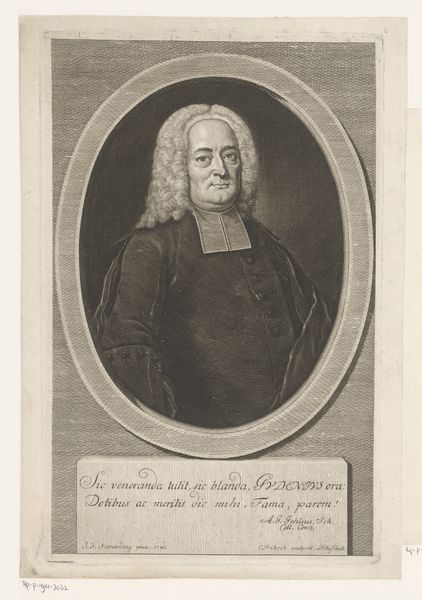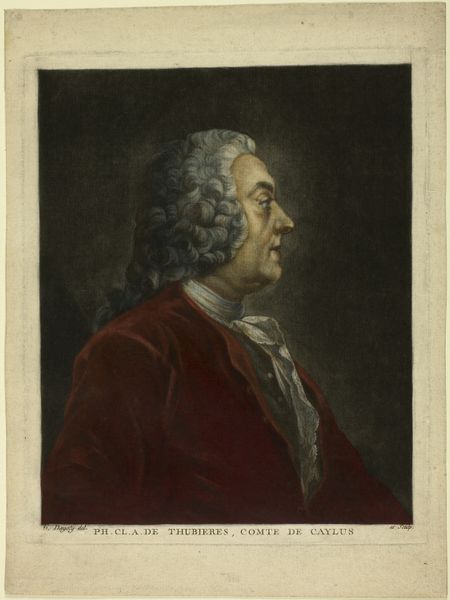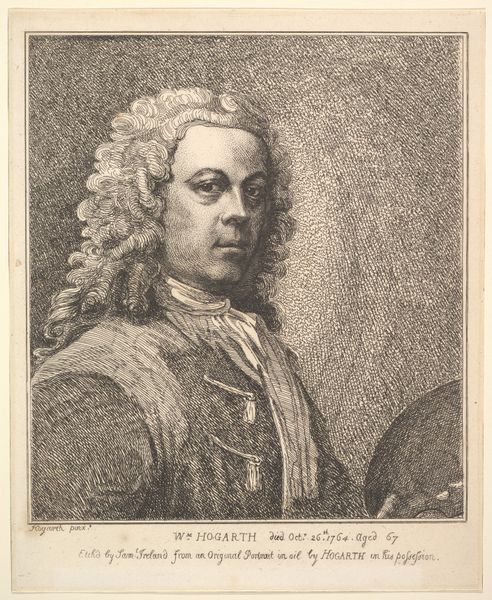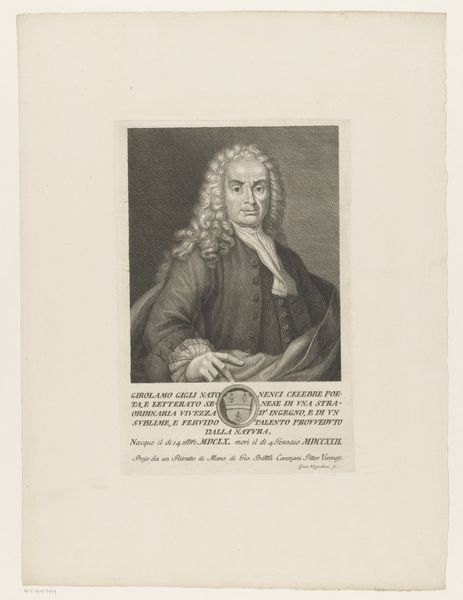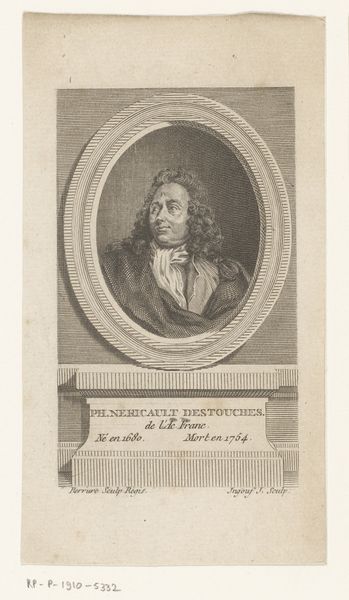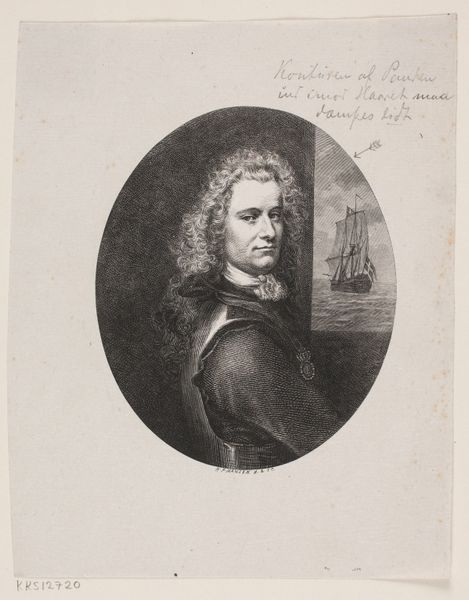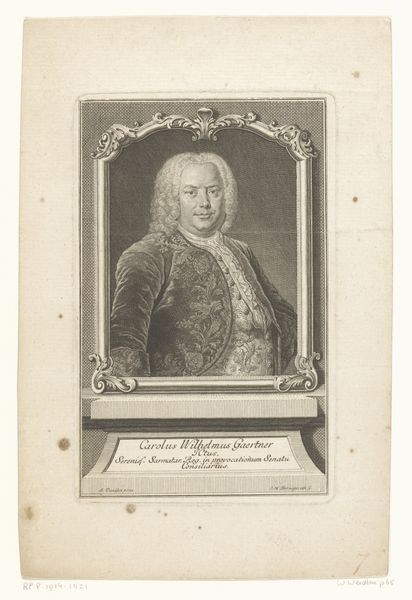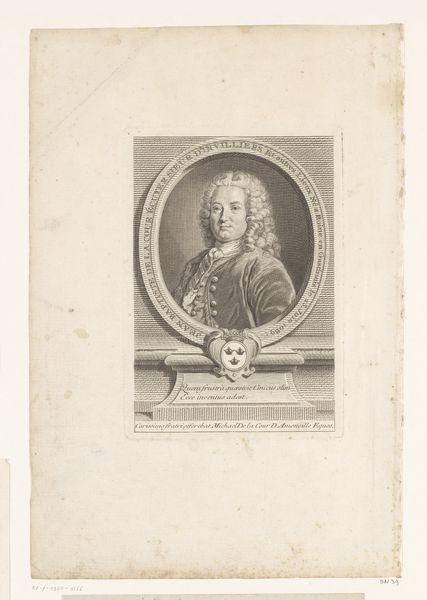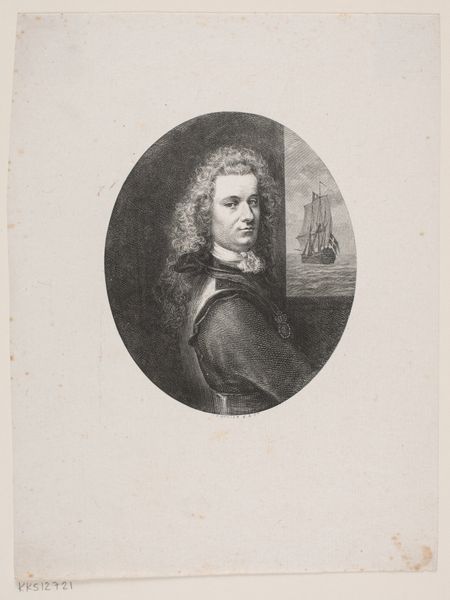
Philippe Claude Tubières, Comte de Caylus 1770
0:00
0:00
drawing, print, paper, engraving
#
portrait
#
drawing
# print
#
paper
#
portrait drawing
#
history-painting
#
engraving
#
rococo
Dimensions: 296 × 240 mm (image); 318 × 259 mm (plate); 444 × 301 mm (sheet)
Copyright: Public Domain
Curator: We're looking at a portrait print from 1770, "Philippe Claude Tubières, Comte de Caylus," made by Jean Baptiste André Gautier d'Agoty. The work is held here at The Art Institute of Chicago. Editor: There's a sombre, almost austere mood established despite the flourishes in the subject’s wig. The restricted grayscale palette and close cropping intensify the focus on his profile, don't you think? Curator: Indeed. The use of engraving and possibly drawing emphasizes line and texture. Caylus himself, of course, was a prominent figure in the arts—an antiquarian, a man of letters, deeply influential on the development of Neoclassicism. Editor: The lines themselves are quite intricate when you consider the Rococo flourishes he's adorned with. There's a curious interplay of rigid and fluid form at work; the man is presented as quite stately, although I struggle to connect that sense of stoicism to a movement emphasizing such elaborate ornamentation. Curator: His steady gaze certainly gives off a different story than typical Rococo depictions. And I believe that this portrait marks him with a distinct presence. He stands as a monument of a man straddling different eras. You know he would have understood the cultural weight an image carries! Editor: Undoubtedly. There's an acute tension captured in the contrast of Caylus' austere, formal bearing with the flourishes of Rococo that speaks across eras to an individual aware of how he is being depicted for the ages. Curator: Exactly, a very intentional creation, one aware of the visual rhetoric of power and intellect it projects. The print, in turn, grants us a glimpse into the formation of artistic and intellectual authority in the 18th century. Editor: An era of poised surfaces with powerful undercurrents—quite well articulated through the work's own poised surface. Curator: I leave this with an enriched idea of what he did to art. Editor: I'll definitely see Rococo flourish in new ways.
Comments
No comments
Be the first to comment and join the conversation on the ultimate creative platform.
